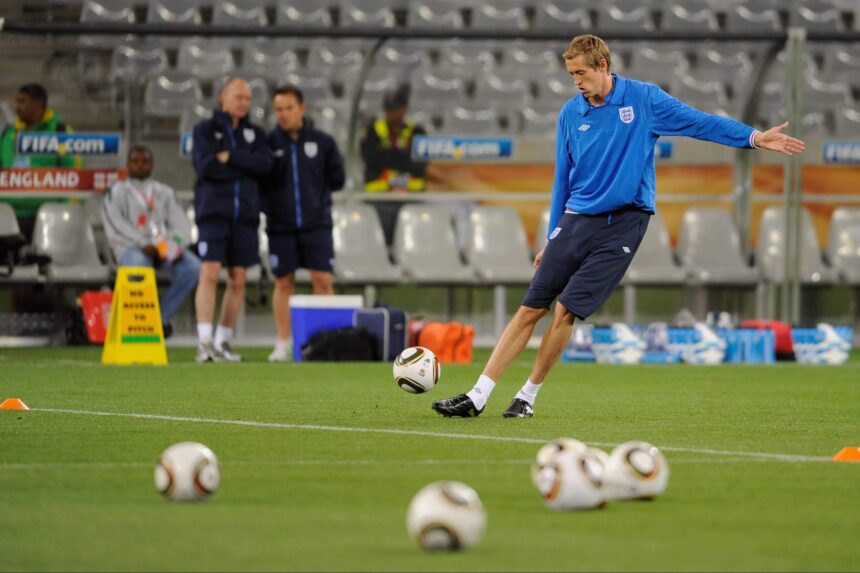If you follow sports other than football, it’s very normal for the equipment used — and, more specifically, the type of ball — to play a major role in discussions about the nature of the sport itself.
In cricket, for example, there are two leading manufacturers of balls, the Duke and the Kookaburra, and they clearly behave differently when bowled at high speed, with the Duke moving laterally much more, often deceiving batters. The best bowlers, of course — and those who are accustomed to playing with that brand of ball — use this to their advantage.
Advertisement
In tennis, too, it’s becoming an increasingly big talking point as manufacturers bid to provide the biggest tournaments with their balls. It’s not just about the variation in balls used, but also the general quality. “They should not just be picking the ball that will pay the most money to be associated with a tournament, but what is the actual best ball,” complained one coach last year.
We could cite a dozen other sports. However, in football, the issue is treated differently.
This is a sport where the ball is the only seriously salient shared piece of equipment — aside from the pitch itself — and yet any discussion about the topic is automatically considered either a bad excuse from a sore loser, or a ludicrous topic of discussion tantamount to discussing the height of corner flags or the colour of the goal nets. But different brands of footballs vary significantly in performance, and a poorly designed one can have a major impact on the quality of gameplay.
It’s worth pointing out that, during the 1990s, there was no official Premier League ball. Instead, clubs had individual contracts, and many used balls provided by whoever their kit manufacturer was. So, while the Mitre ball dominated those years, if you watch Stan Collymore smashing home the winner in Liverpool’s famous 4-3 defeat of Newcastle United in 1996, it’s an Adidas ball that goes past Pavel Srnicek.
If you watch Marc Overmars scoring Arsenal’s winner at Old Trafford two years later, it’s the Umbro ball that Manchester United used.
This changed around the start of the century, when the league adopted a standard ball. Nike has held the contract since then, but will be replaced next season by Puma.
Within the Nike era, a wide range of designs have been used. Towards the end of the first decade of the century, the Nike Total 90 range was incredibly unpredictable in the air. It would wobble, dip and swerve late in its flight, and led to some spectacular — but also slightly incredulous — goals.
Advertisement
Cristiano Ronaldo was unquestionably the Premier League’s best player in this period, in part because he worked out precisely how to strike that ball. In contrast to the accepted technique throughout much of football history, which was about deliberately manipulating the ball with side-spin or top-spin, Ronaldo’s method was more about ‘stunning’ it and relying on late movement that even he couldn’t have predicted. His technique worked brilliantly, particularly from free kicks, with his incredible dipping effort against Portsmouth the best example.
Ronaldo’s free-kick success rate has declined significantly during the second part of his career, partially because of how the footballs have changed. Those used in the past decade (Nike’s Ordem, Merlin and Flight models) have seemingly been easier to curl in a natural, logical manner.
James Ward-Prowse has become the Premier League’s most renowned free-kick taker, and has thrived not by relying on random late movement, but by applying curl and dip, more in the David Beckham mould. Few players are still trying the Ronaldo technique, which was once very fashionable.
The most volatile ball of the modern era was Adidas’ Jabulani, introduced for the 2010 World Cup. It only had eight panels, reducing the drag and making it difficult for players to control when shooting — or, indeed, when playing long-range passes or crosses. Essentially, the ball didn’t decelerate as quickly or move laterally in the expected pattern.
England’s Peter Crouch practising with the Jabulani in Cape Town in 2010 (Michael Regan/Getty Images)
There’s been some revisionism about the Jabulani in recent years based on selected highlights from that World Cup which feature players scoring spectacular long-range goals. Uruguay’s Diego Forlan seemed to cope well with it, but a couple of isolated moments shouldn’t disguise the fact that ball probably contributed to the low quality of some matches in the 2010 finals.
Advertisement
This season, the seven English clubs playing in Europe have used four different balls in four competitions. Alongside Nike’s Premier League model, Adidas provides the one for the Champions League (with Kipsta having the deal for the Europa League and Conference League), Mitre does the same for the FA Cup, and it was Puma in the Carabao Cup.
The ball that tends to receive the most complaints is the Mitre one, with Pep Guardiola a particular critic. “The ball in the Champions League is exceptional, the ball in the Premier League is exceptional, this one isn’t,” he said after Manchester City’s 3-1 fifth-round win against Plymouth Argyle.
“It’s difficult to control. When you lose it (sounds like) you’re complaining, but the ball is not right. I know it’s a business and they come to agreements… do you know how many shots went over (the crossbar in the Plymouth match)? Look at other games. Normally, the ball goes on target from these shots.”
It’s been a consistent theme from Guardiola — his complaints about Mitre footballs go back to 2017, during his second season in charge at City. The sense with Mitre balls is that they feel quite ‘heavy’. While they don’t sail on like the Jabulani, there is also the perception they don’t move laterally as much. It’s difficult for players to put craft on their shots.
Mikel Arteta also referred to the Puma ball used in the Carabao Cup after his Arsenal side’s semi-final first-leg defeat against Newcastle United in January — “We kicked a lot of balls over the bar, and it’s tricky because these balls fly a lot, so there’s details that we can do better” — although he didn’t seem to be using it as an excuse. As he mentions, the Puma football seems difficult to keep down, flying on much more easily, although they have been used in La Liga and Serie A, the top domestic divisions in Spain and Italy, with few complaints.
In an increasingly homogenous sport, there’s nothing wrong with a bit of variety. And while that variety used to be determined by clubs, and therefore was an extension of home advantage, now it’s about different balls for different competitions.

Guardiola with the Mitre ball he doesn’t like (Robbie Jay Barratt/AMA/Getty Images)
The problem comes because manufacturers are paying increasingly high sums for their balls to be used, so need the balls to be noticed. Nobody would talk about a ball that behaves the same as its predecessor made by another supplier, so companies are incentivised to create something different. Even if they’re unpopular and influence the game to an unreasonable degree, that might still be in their interests.
Advertisement
There are restrictions on the nature of balls.
As well as passing a “FIFA Quality Programme for Footballs” test, the balls must all be 68cm to 70cm in circumference, weigh between 410g and 450g, and be inflated to a pressure between 8.5 psi (pounds per square inch) and 15.6 psi, according to the Laws of The Game.
But then, this means that one football can legally be around 10 per cent heavier than another, and the range of pressure allowed is surprisingly large, too. In that light, it’s entirely legitimate for players and managers to pinpoint the difference in balls as a relevant factor in determining the outcome of matches.
(Top photo: Mikel Arteta with the Puma ball; Glyn Kirk/AFP via Getty Images)






